Dive Gear Checklist: 23 Items You Can’t Forget for Scuba Diving
This dive gear checklist will ensure you never show up for a dive missing equipment again.
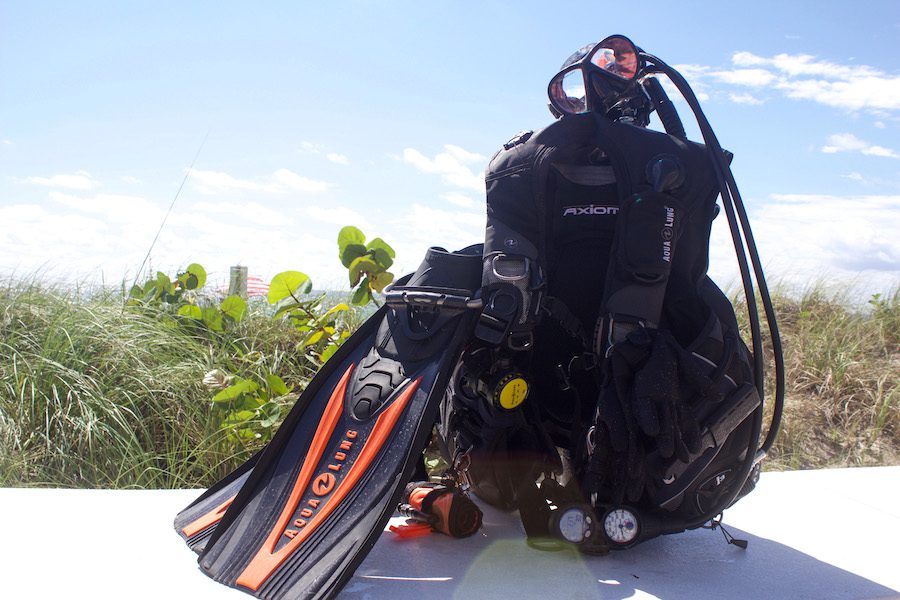
Scuba diving is a gear intensive sport filled with enough gizmos, gadgets, and do-hickeys to confuse anybody. And even if you think you have everything you need, you’ll certainly realize you’re missing something.
Or at the very least, you’ll pack your dive bag for a huge adventure only to forget that one very important item. I’ve certainly been victim of that – leaving my fins, of all things, behind on more than one occasion.
Don’t be like me – this dive gear checklist will ensure you never forget some of those essential items again. By the end of this article, you’ll always be prepared for any dive.
Dive Gear Checklist: 22 Items You Can’t Dive Without
Use this packing list on your next adventure to ensure you never leave essential gear behind again!
1. Diving Mask
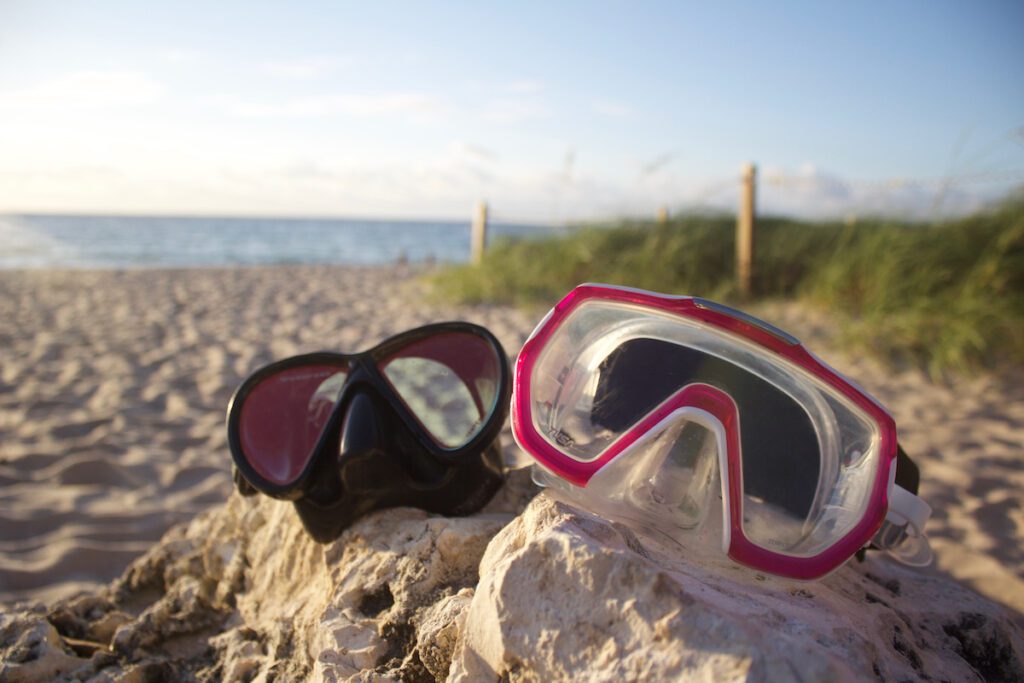
How were you planning on seeing underwater anyway? Dive masks allow our eyes to take in all the beauty the marine world has to offer!
If you’re going to own one piece of equipment – this is it. Each mask fits different and are highly personal. A mask that fits one person’s face, may not fit yours.
Not to mention, spitting in masks is highly common as a form of defog. Gross, right? Why would you rent a piece of gear that possibly hundreds of people have spit in?
2. Snorkel
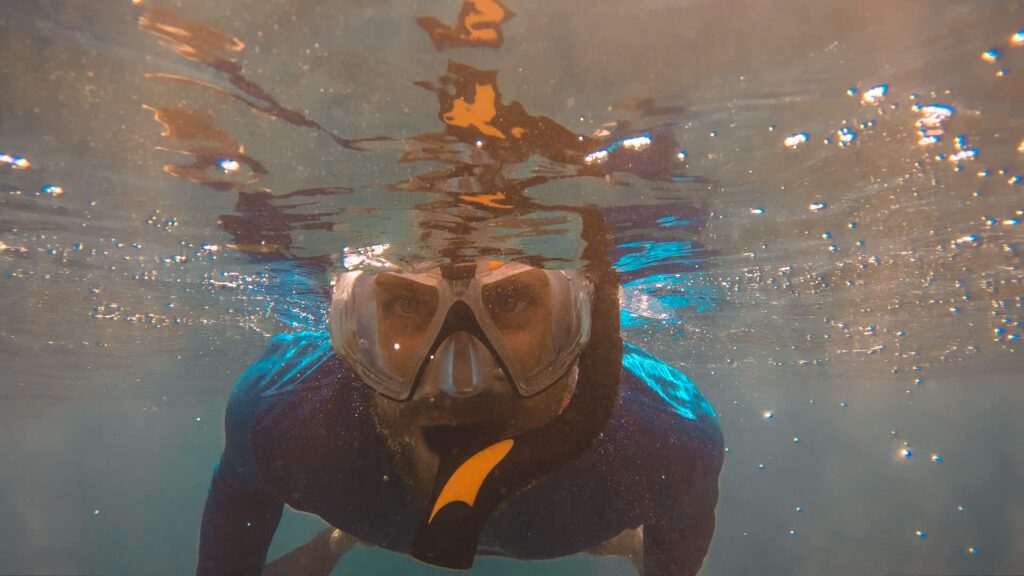
Along with the mask, a snorkel is highly personable and an essential piece of gear for diving. But how do you breathe on a snorkel underwater?
The answer is: you don’t. You use it on the surface for safety purposes or saving air in your dive tank. Believe me, it’ll come handy at some point.
And again, why would you rent a piece of gear that hundreds of people have put their lips on? Owning a snorkel is synonymous with a mask – just select something simple and not too pricey.
3. Fins
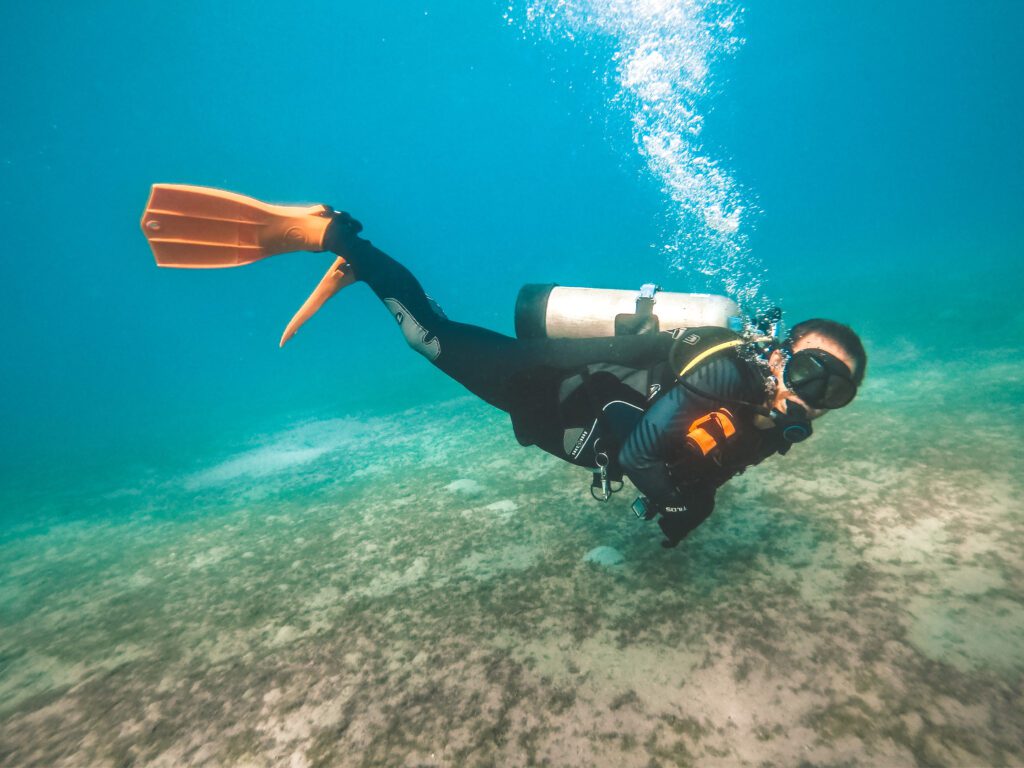
Fins allow you to do your best fish impression underwater. They control your movements while propelling you forward and helping your body to a neutrally buoyant position.
A good set is critical to a successful dive career with a ton to choose from. In fact, different types of fins achieve different goals. You’ll find closed-heel (full foot) or open heel and split or blade.
We love open heel, blade fins. They require dive booties, but they’ll minimize blisters and keep your feet warm on cold days. Although, it is entirely personalized so we suggest trying some on at your local dive shop before you buy!
4. Wetsuit/ Thermal Protection
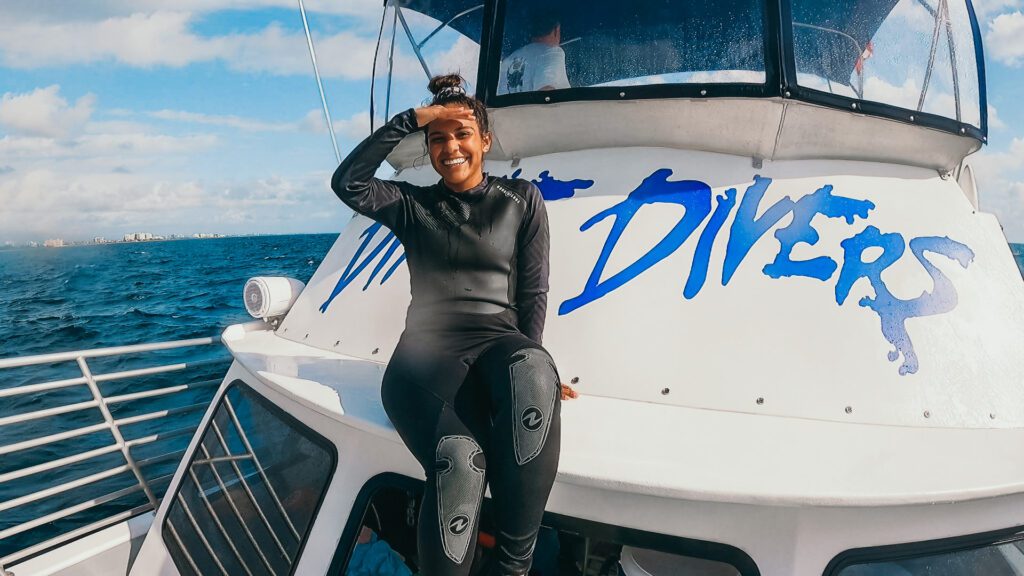
A wetsuit can easily make or break a dive. If you’re diving in cold conditions without a thick enough wetsuit, it can be absolutely miserable.
Remember: a thicker wetsuit is required for colder conditions. Wetsuits range from 1 mm thickness to 7mm. Anything past that is likely considered a dry suit.
In the same breath, the thicker the wetsuit the more positively buoyant you become. Be sure to factor this in when deciding how much weight you need while diving.
Don’t dive cold again. Wear a wetsuit.
5. Dive Computer
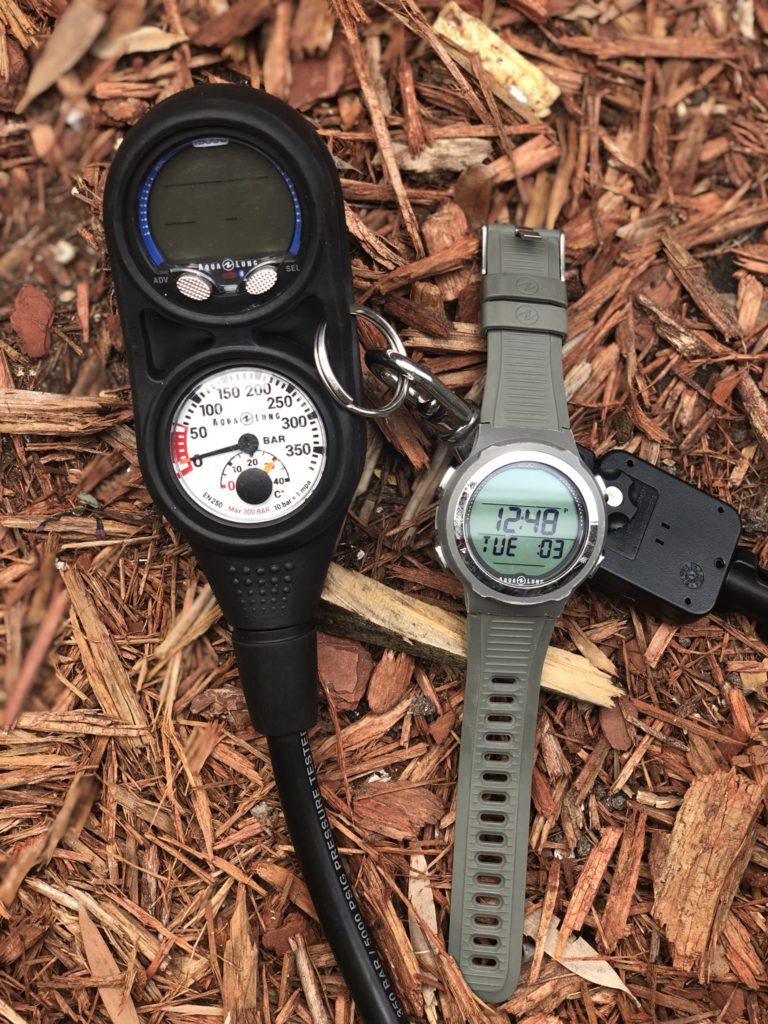
Dive computers are an essential component of your dive gear setup. While diving, they’ll tell you your time, depth, no deco time, safety stop and much more. If you don’t own one yet, it may be time to change that.
Why? Again, they need to be highly personalized and you can even download all the information straight to your dive log if you want to!
I carry two: one on my SPG console and one on my wrist. It’s recommended you carry two just in case one goes bad while diving.
6. Regulator
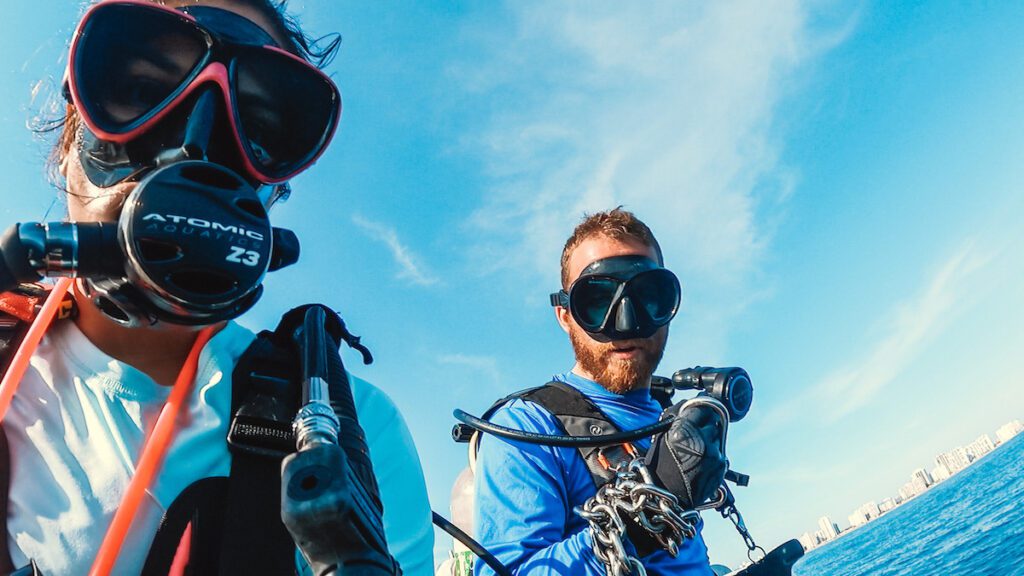
Ah. Your regulator. You know, the thing you breathe from? Yea, it’s pretty important.
Your regulator set up consists of a few different pieces: the 1st and 2nd stage. The 1st stage is the hunk of metal that attaches to the tank. It depressurizes the air as it enters the regulator hose.
The 2nd stage is the piece you breathe from. This depressurizes the air to safe levels for breathing. Buying a good 1st and 2nd stage can make a huge difference when it comes to performance, air consumption, and maintenance.
7. Octopus
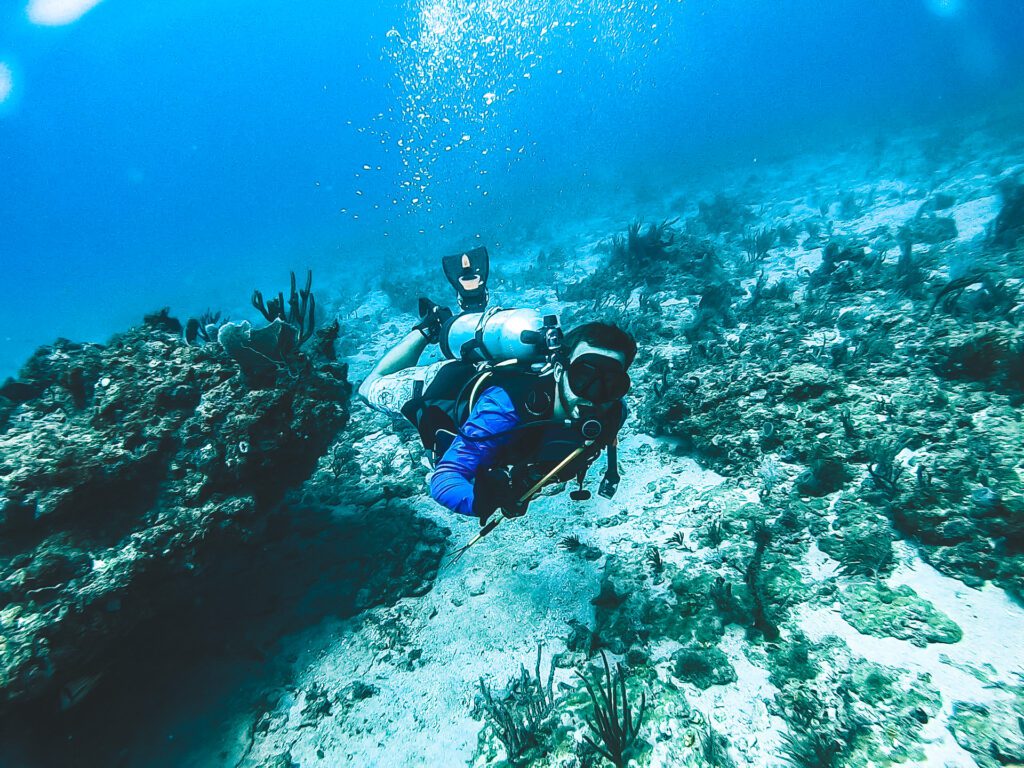
The octopus is the yellow hose hanging off of your regulator. It’s your alternate air source in case your primary goes bonkers.
It’s vital, possibly life saving, that you dive with an octopus. Some dive shops may not let you dive if you don’t have one!
8. Pressure Gauges (SPG)
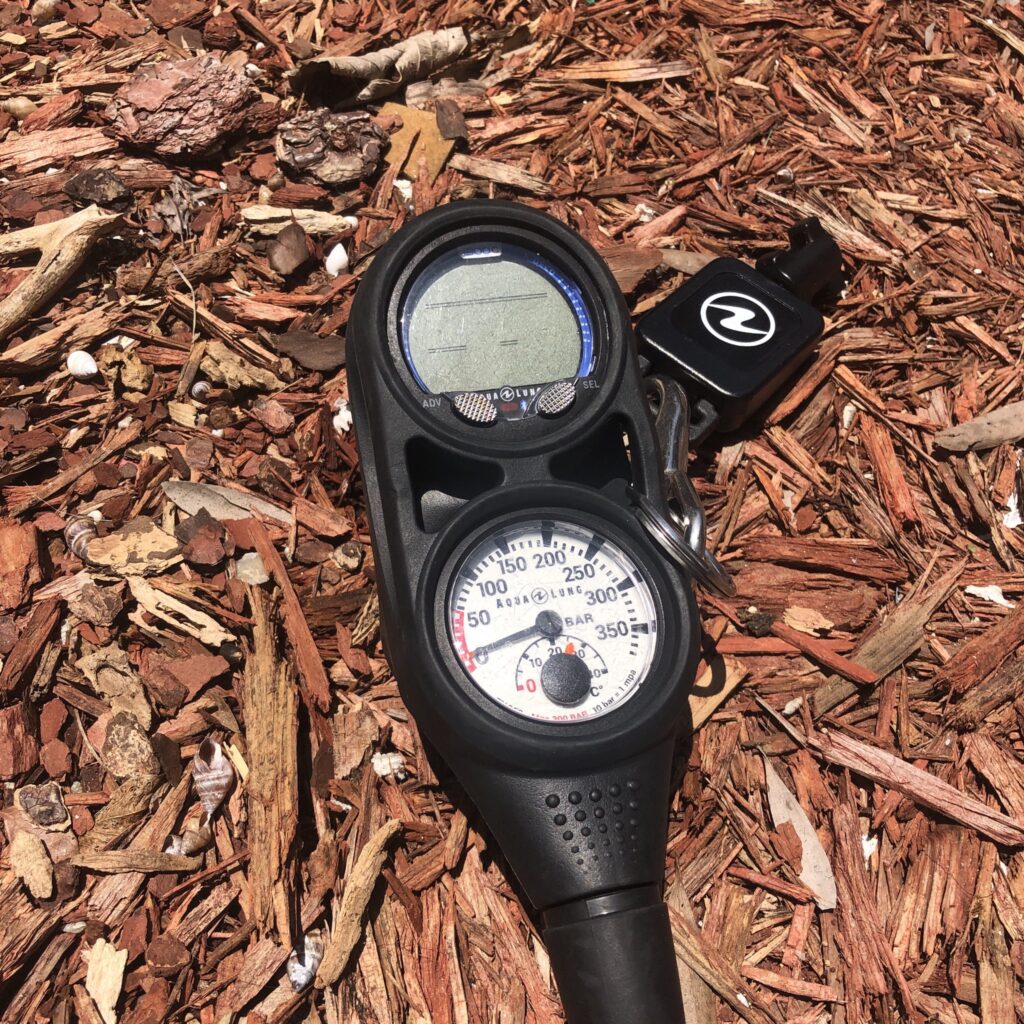
SPG, or submersible pressure gauge, is another essential piece of the dive gear checklist. It tells you how much air you have left in your air tank and serves as an attachment site for dive computers or compasses.
You can even get bluetooth versions to connect directly to a wrist computer, but I tend to prefer the old school hard-wired hose. I can’t get a bluetooth to work in my car, let alone 100 feet below the surface!
9. Scuba Tank
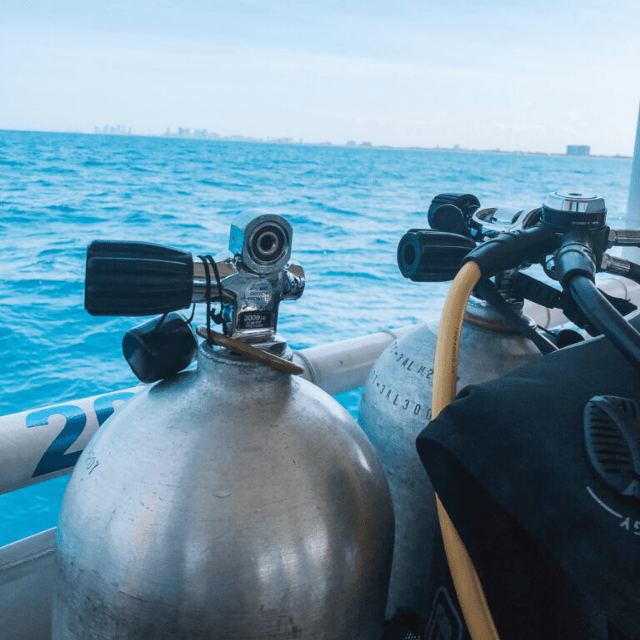
Scuba tanks hold all the air you’re going to depend on below the surface. It’s one of, if not THE last piece of gear we recommend purchasing for your dive gear checklist.
They’re just so dang easy to rent. No maintenance. No storage. Just an easy rental. Although, if you start diving multiple times a week, it may be worthwhile to purchase your own scuba tank as you’ll end up saving money.
If you do choose to go the “purchasing your own” route, check out our buyer’s guide on purchasing a used scuba tank. It’s a good way to save some money!
Other Scuba Accessories
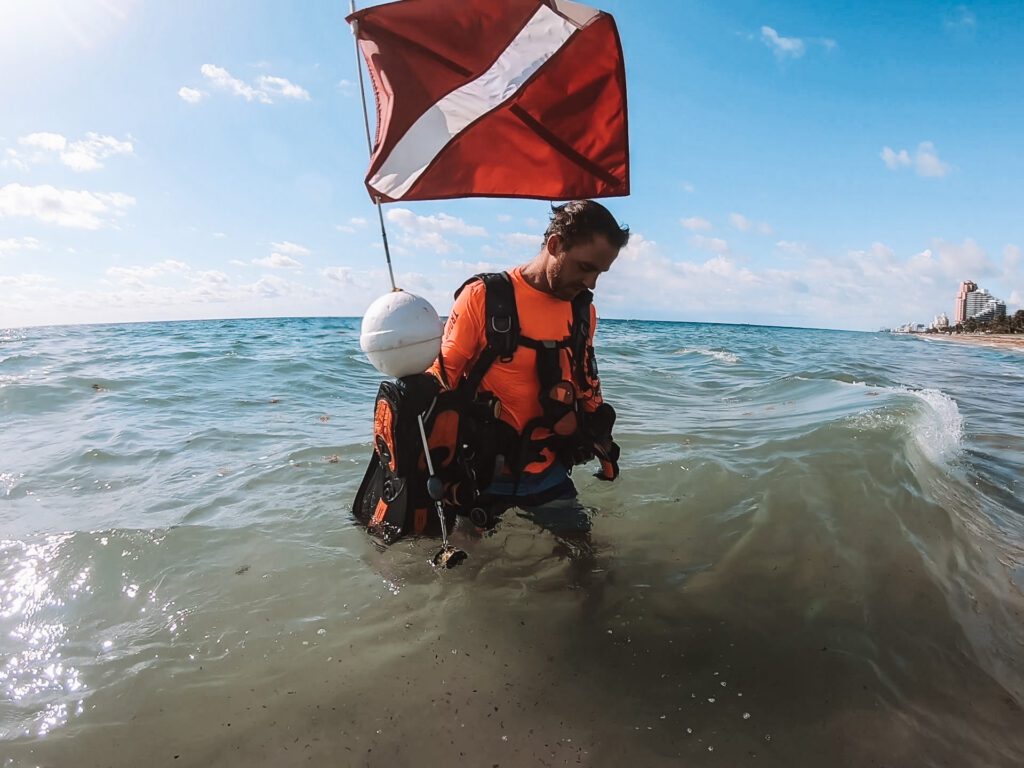
Beyond the basic equipment, scuba diving requires even MORE accessories for safe and optimal diving.
10. Booties
If you own open-heel fins, you’ll be needing dive booties to accommodate. They keep your feet warm AND But even beyond diving, I use my dive booties for all sorts of activities: kayaking, slogging, and boating. They’re handy to have!
11. Surface Marker Buoy (SMB)
A safety beacon for the surface. This is the orange sausage-looking tube you’ll inflate if you ever get in trouble and need to surface away from the boat!
12. Finger Spool/Reel
Another essential accessory for scuba diving. A reel is used for wreck diving, attaching to a dive flag, or your SMB before surfacing. Never dive without one!
13. Mask Defog
If you’re not a fan of hacking a wad of spit directly into your mask only to put it on your face moments later, I’ve got a solution for you.
Reef safe defog from Stream2Sea! Not only do you NOT have to spit on your own face, you help the reef out by removing harmful chemicals.
Plus, you can get 10% off your purchase by using the coupon code “OceanWide” at checkout!
14. Dive Knife
Dive knives are essential for a variety of reasons: removing marine debris, cutting out of an entanglement, or self defense from your crazy dive buddy (kidding….kinda).
Regardless, we always bring our dive knives along and always have a reason to end up using them.
15. Gloves
Protect those delicate hands of yours with a pair of gloves. Or at the very least, ensure they don’t get so cold during your dive!
16. Flashlight
A dive light is handy to carry along no matter where or when you’re diving. Obviously, they’re necessary for night diving. But you’d be surprised how often you’ll end up using it during the day.
Whether it’s to take a closer look into a hole, crack, or crevice, or peeking your head inside a shipwreck. A flashlight is a great item to carry while diving at all times.
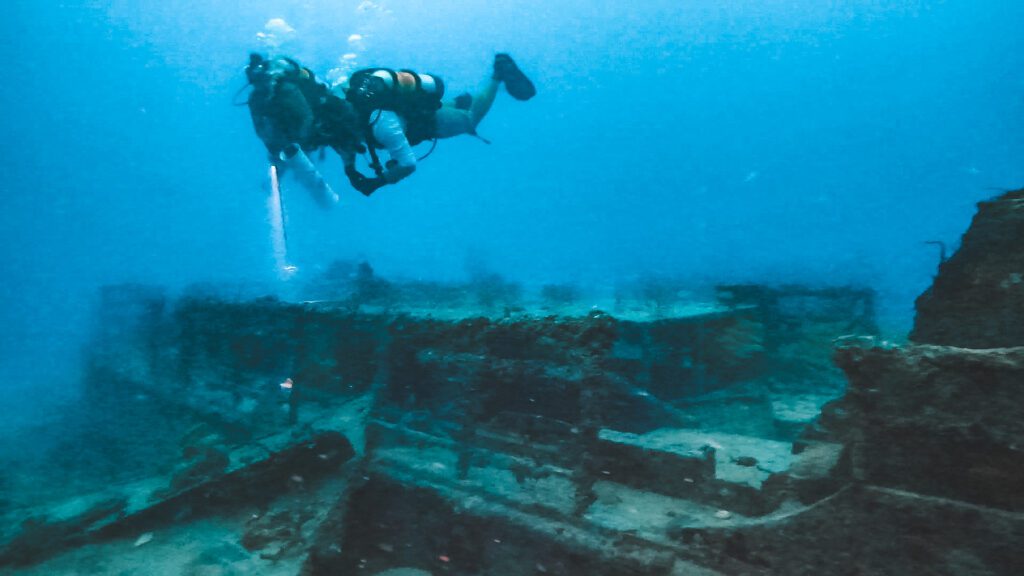
17. Logbook
Logging your dives is a good habit to get into. It tracks how many dives you’ve done for personal use, training purposes, and professional use (if you ever want to become a Divemaster or Instructor).
18. First Aid Kit
Although most dive operations will have a basic first aid kit, it’s always good practice to carry your own just in case the need arises.
Just be sure to get a waterproof one – you’re diving after all.
19. Writing Slate
Underwater communication can be hard. Hand signals may differ from buddy to buddy, or region to region. One thing that’s consistent? Writing what you’re trying to say.
Writing slates are a handy way to communicate complex ideas underwater to your buddy.
20. Tank Banger
Have you ever had your buddy get distracted and swim off into the distance without letting you know? Yup. Me too (although, most of the time it’s me who’s getting distracted).
A tank banger creates a percussion of noise underwater which, hopefully, your buddy will be smart enough to hear and look for you!
21. Gear Clips
I use gear clips for everything and keep a few spare on me at all times. Not only do they keep any dangling hoses or special equipment attached to you, they’ll even make your body more streamlined underwater by tucking everything close your body.
22. Underwater Camera
Dive cameras. A complex topic. So many are on the market and some are better than others. But generally speaking, a GoPro can take some phenomenal video AND pictures.
We love using our new GoPro Hero9. The 5k capabilities and compatibility/ affordability with LED lights, red filters, and underwater casing make it a perfect choice for recreational divers.
The only downside is that it’s tough to get close to some aquatic life. GoPro lacks zooming capabilities. So if you’re seeking to take some still shots of marine creatures, we recommend the Olympus Tough TG-6 and its corresponding housing.
READ MORE: What’s the Best GoPro Mount for Scuba Diving?
23. Compass
By now you should know how to use a compass underwater. Operating one accurately may be the difference between an epic dive and getting lost underwater (followed by an embarrassing surface swim back to the boat).
Dive Gear Checklist: Final Thoughts
Although comprehensive, this dive gear checklist isn’t exclusive. Sure, diving is a gear intensive sport and there’s certainly gear you can’t dive without, but scuba diving is highly personable. What works for some, doesn’t work for others.
So consider all the options above, but do some research beyond, as well. In the long run, it’ll make you be a better diver!
Happy Diving!
DON’T FORGET TO BUNDLE IT ALL UP: 9 Gear Bags Every Diver Can’t Dive Without
Enjoy this Post? Pin it!
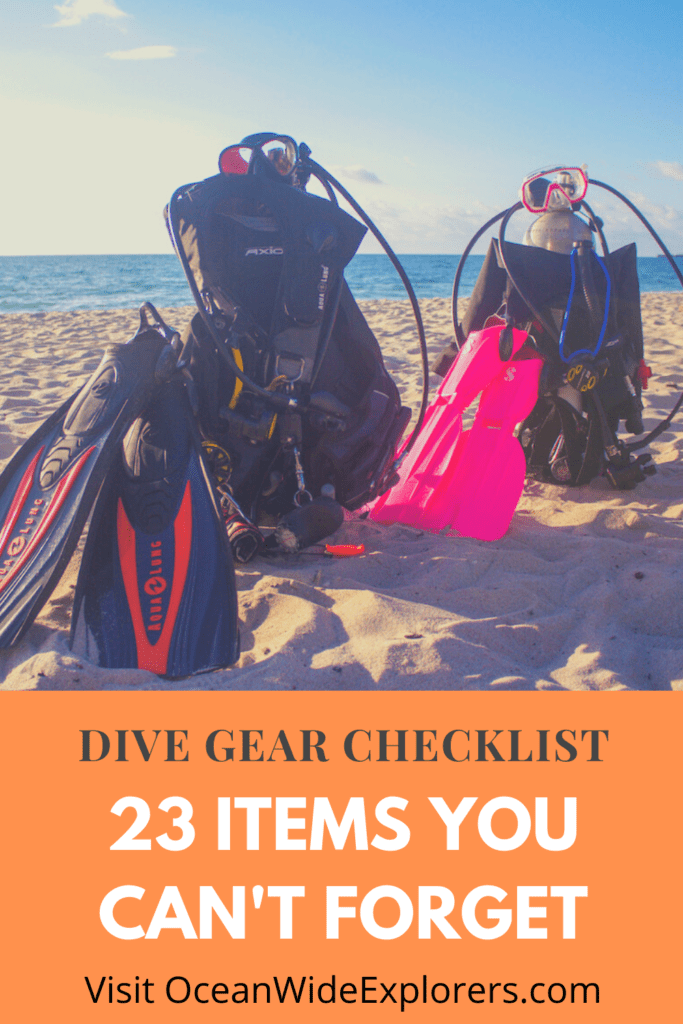
Read More Scuba Diving Tips
We hope you enjoyed our dive gear checklist. Hopefully you’ll find it useful on your next adventure! Here are a few more ocean-loving articles we think you should read next:
- 7 Best Travel BCDs in 2023 (By a Dive Professional)
- 17 Useful Tips for Better Underwater GoPro Videos – Scuba Diving
- Best GoPro Hero 9 Scuba Diving Accessories
- 5 Best Scuba Diving Log Books in 2021
What gear is apart of your dive gear checklist? Any pieces of equipment that we missed? Let us know in a comment below!

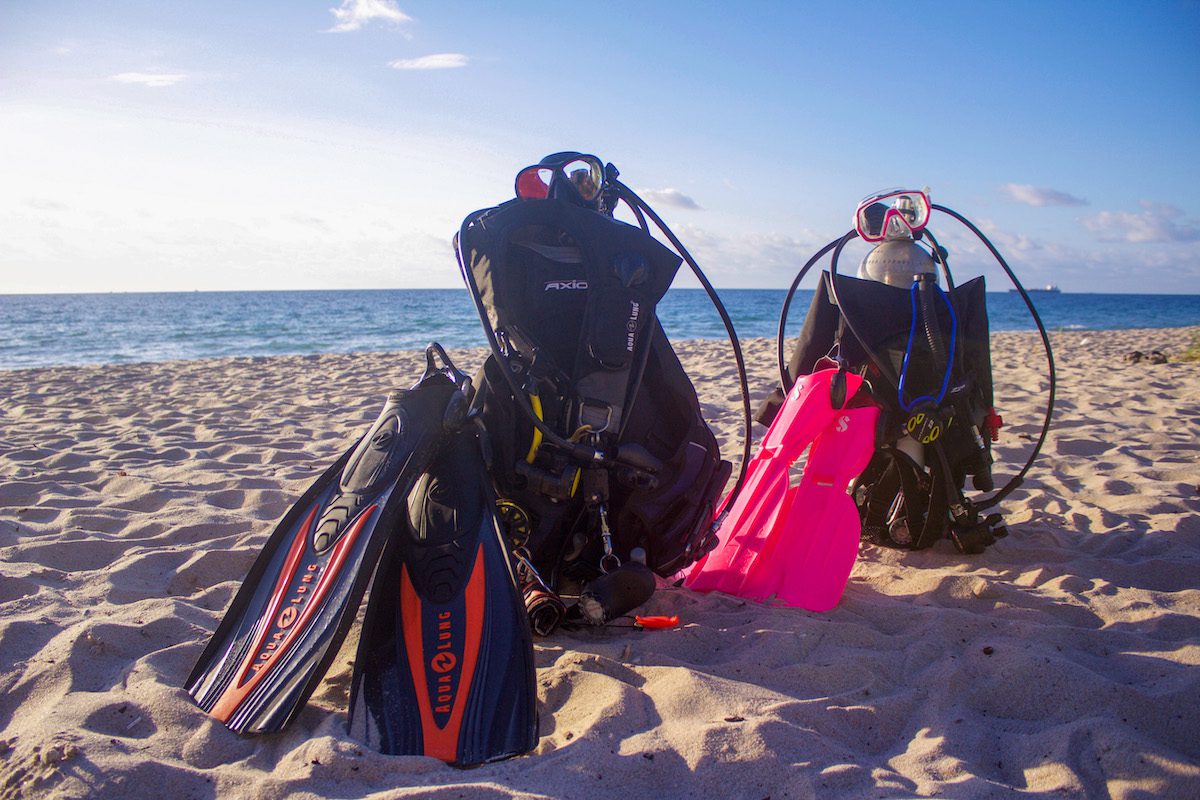
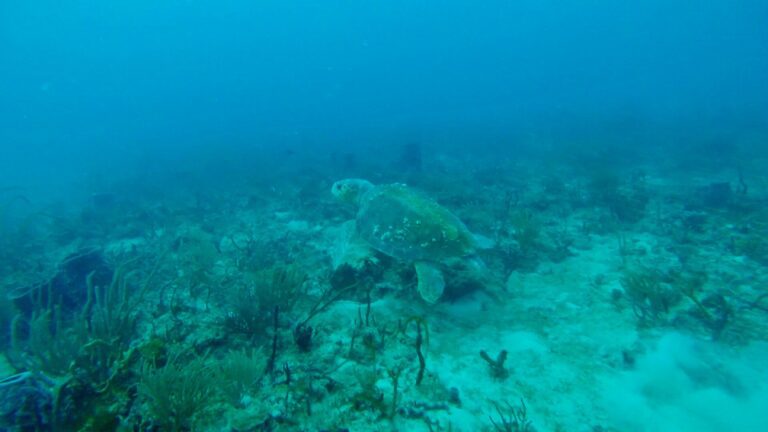
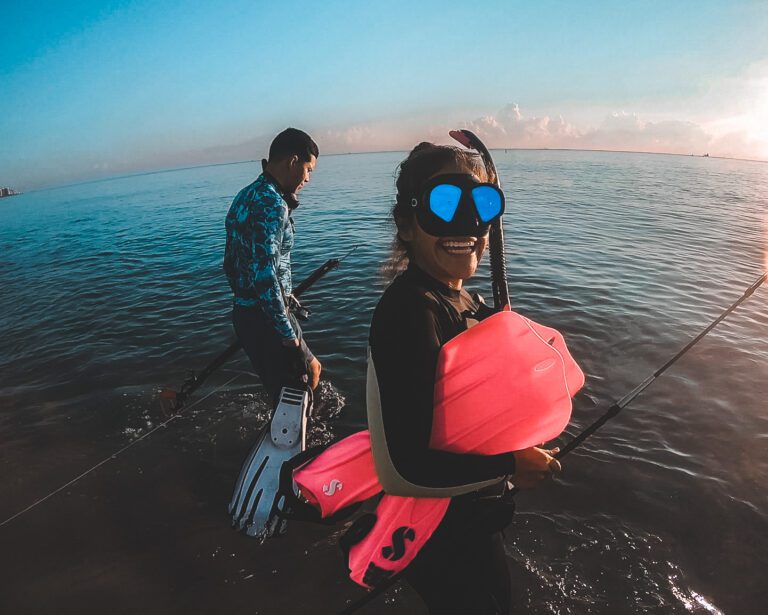
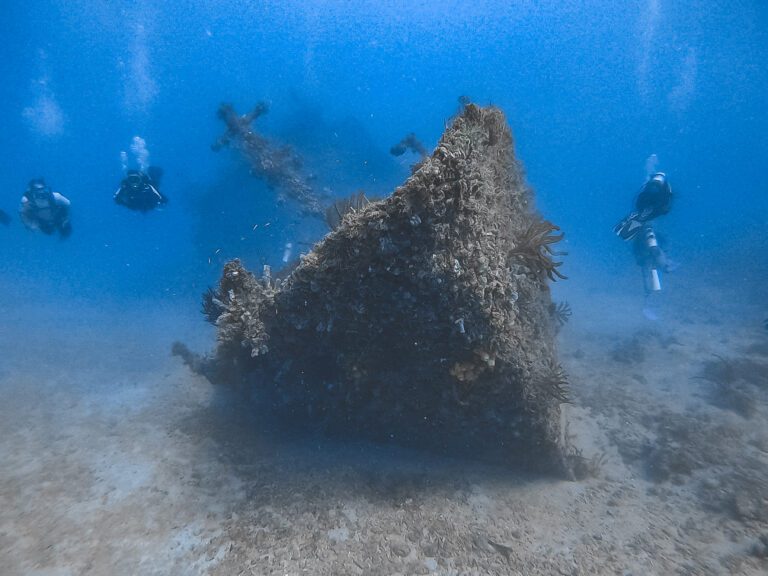
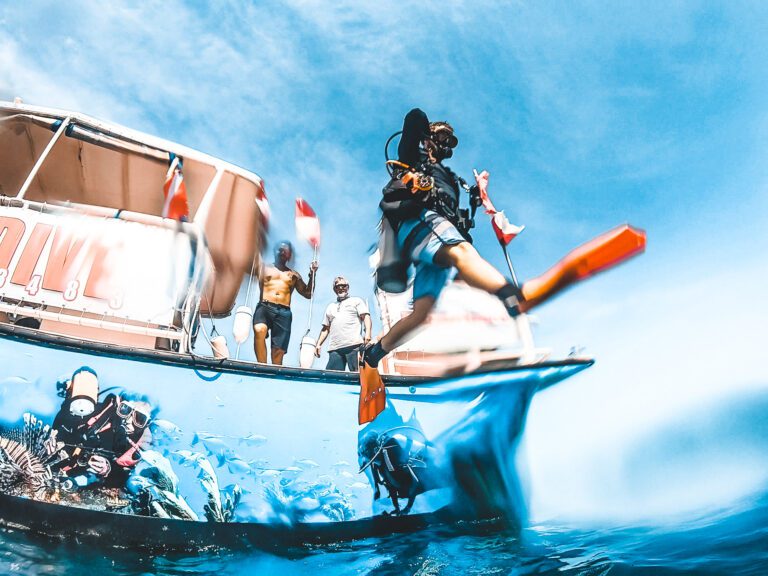
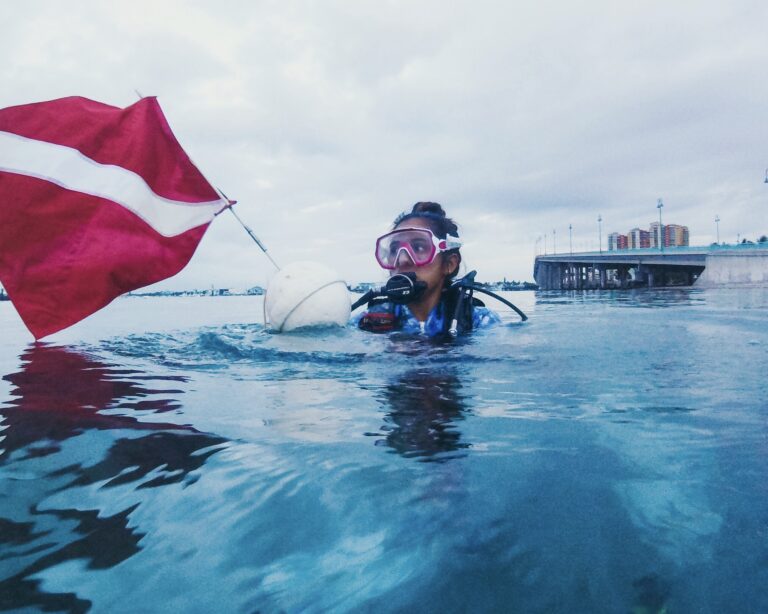
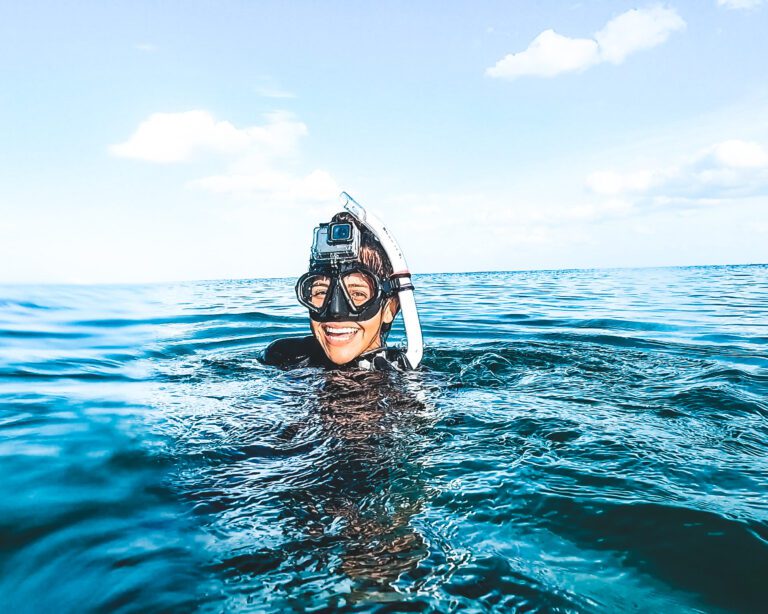
No need for a bcd?
Kim,
How foolish of me! I totally forgot to add BCD to the list. Thanks for letting me know – I’m working to add BCD now!
Andrew